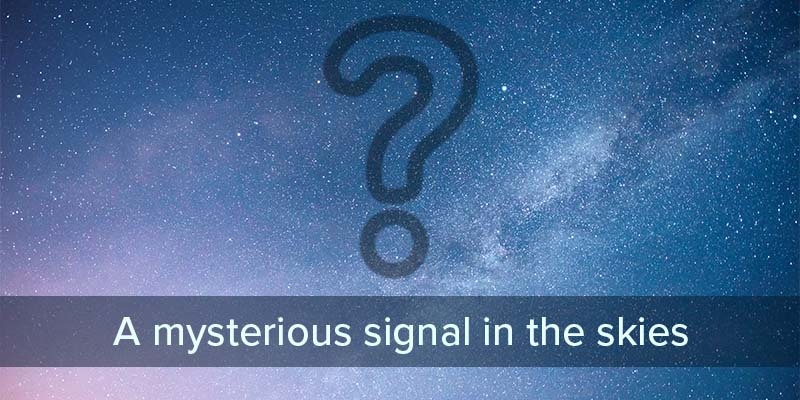
Astronomers from Australia have recently discovered an object in the Milky Way that is nothing like they’ve ever seen before.
The object was first discovered by Tyrone O’Doherty, a university student when he observed that something in the galaxy was releasing bursts of radio energy thrice every hour. This means the object would ‘turn on’ for a full minute approximately every 18 minutes. While objects emitting radio energy are common and have been documented before, no object has turned on for a full minute or emitted energy at such frequent intervals, astronomers say.
#breaking A team mapping radio waves has discovered something unusual that releases a giant burst of energy three times an hour, & it’s unlike anything astronomers have seen before. https://t.co/PSfpzi6oMM @CurtinMedia @CurtinUni @ColourfulCosmos @Nature @PawseyCentre @CSIRO_ATNF pic.twitter.com/uipt9rGgfC
— ICRAR (@ICRAR) January 26, 2022
O’Doherty is part of a team led by astrophysicist Dr Natasha Hurley-Walker, from the Curtin University node of the International Centre for Radio Astronomy Research (ICRAR), which is currently researching the object using a powerful telescope.
According to the team, the object is most likely a ‘transient’, an object in space that turns on and off at set intervals. After going through years of data collected in previous years, the team has established that the object is 4,000 light-years away, is very bright and has an extremely strong magnetic field. The team is also surprised that it is emitting such strong radio waves at such short intervals because according to their mathematical calculations, it cannot have the energy to do so.
There are many theories as to what the object can be. It could be a neutron star or a white dwarf (remnants of a collapsed star), or even alien life forms trying to contact us. But the astronomers ruled that last theory out quickly enough. According to astrophysicist Natasha Hurley-Walker, who led the research, the radio waves were observed through a wide range of frequencies and it showed that the source was a natural process, and not artificially created.
But don’t be disheartened — this could still lead to a huge, new discovery of a new celestial object we didn’t know existed. Astronomers are currently searching the universe for more such objects, in order to identify if this is a unique instance or not. Do you love astronomy? Here is how to become an astronomer in India.
What do you think the object is? Let us know in the comments below.
Want to know more about what’s lurking out there in space? Check out Knowledge Vine:
So You Want to Be a Space Tourist? Here’s How it’s Done
5 Inspiring Facts About Rakesh Sharma, the First Indian in Space
Madhavi is passionate about everything to do with books, art, literature, films, trivia and food. A former journalist, she believes that asking questions makes life interesting.